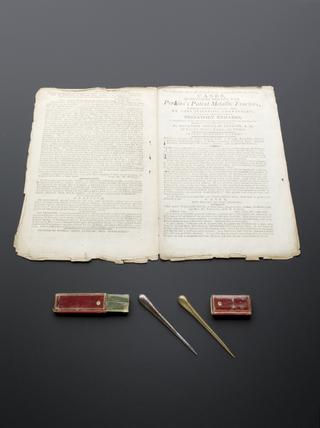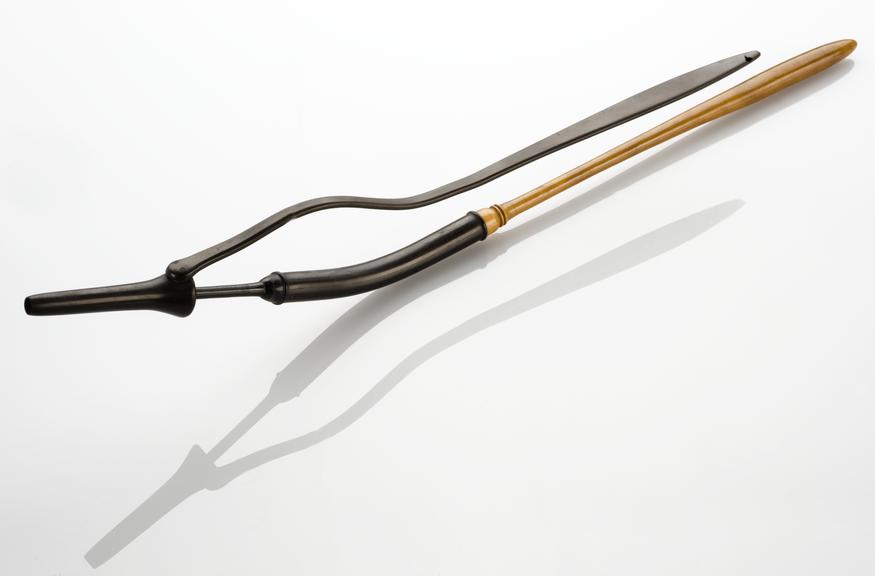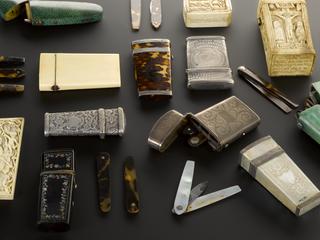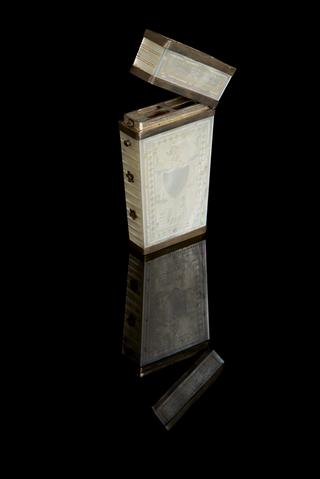
Uterine cannula, United Kingdom, 1851-1900
- Made:
- 1851-1900 in United Kingdom

Uterine cannula, Atthill(?), for applying nitric acid, wood and vulcanite, probably British, second half 19th century
A uterine cannula is a tube inserted into the uterus to drain off fluid or give medication. This example applied nitric acid during genitor-urinary surgery. Nitric acid was introduced as a sterilising agent in the 1840s. It caused the fallopian tubes to close down. This blocked the passage of eggs into the uterus and prevented fertilisation. This example is made of made of wood and vulcanite. It is thought to be of British origin.
Details
- Category:
- Therapeutics
- Collection:
- Sir Henry Wellcome's Museum Collection
- Object Number:
- A612572
- Materials:
- wood (unidentified), vulcanite and complete
- Measurements:
-
overall: 10 mm x 33 mm x 35 mm, 0.02kg
- type:
- cannula


